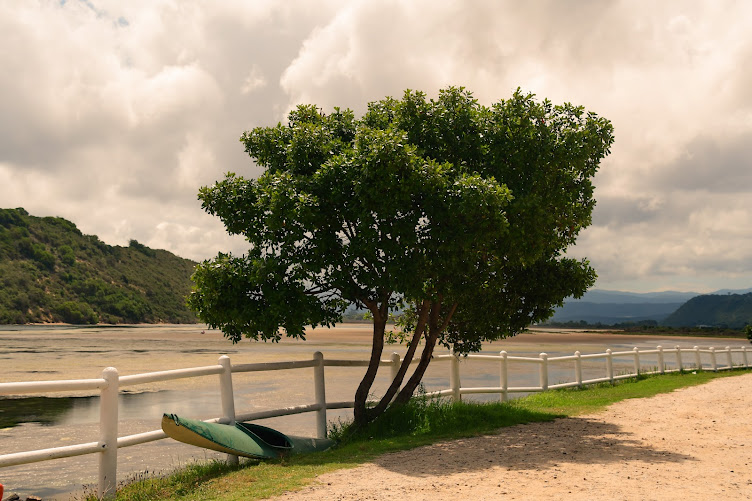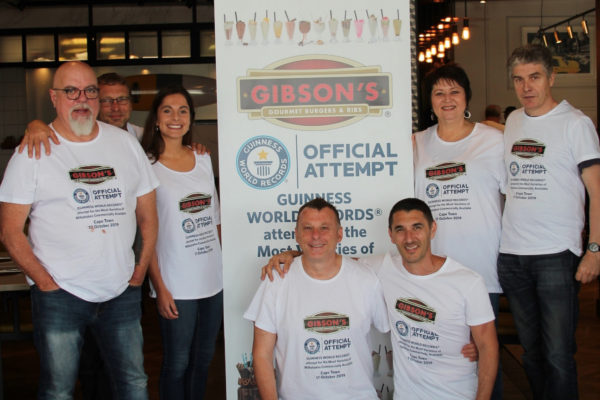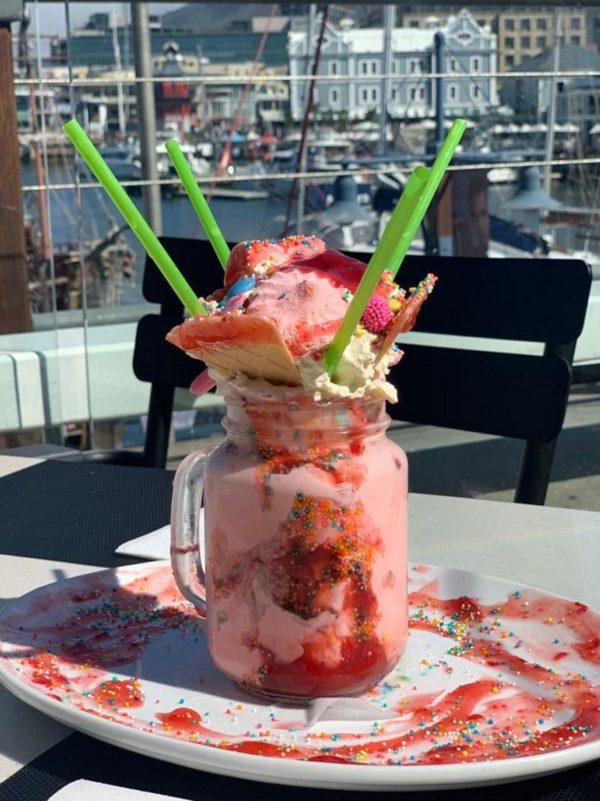The forgotten
dams of Table Mountain
High above the city, five remarkable stone dams
tell the long history of Cape Town’s strained relationship with water
The
taxpaying residents of Cape Town are getting worried. In the heat of summer,
water supplies are critically low, the springs are drying up and local
authorities fear the taps might run dry. Concerned residents petition the local
government to do something to avert the crisis. However, there’s no shaming of
water wasters on social media, or sharing water-saving tips on WhatsApp groups.
And nobody has yet coined the term "Day Zero". Perhaps that’s
because this crisis takes place in 1893!!.
Cape Town has always had a
tricky relationship with water, even though supply of drinking water was the
very reason for its foundation. When Jan van Riebeeck first sailed the
Drommedaris into Table Bay in 1652, the local Khoi people knew the area as
Camissa, the "place of sweet waters". Little wonder Van Riebeeck
chose it to set up a refreshment station for the ships of the Dutch East India
Company
But by the late 1800s those sweet waters were running out,
and the independent municipalities of Cape Town were in trouble. The springs
and streams flowing down off Table Mountain fed every tap in the city, and in
summer the rivers slowed to a trickle. Something had to be done. The solution?
Look to the source.
For much of the city that source was the Disa River, which
flows off the back of Table Mountain and into the sea at Hout Bay. A pipeline
funnelled river water from the mountain to the city — the popular Pipe Track
walking trail, overlooking the Atlantic seaboard, follows the same route —but
in winter the excess flowed into the Atlantic Ocean. What a waste, Thomas
Stewart must have thought to himself.
Stewart was a Scotsman, a hydraulic engineer who’d already
built waterworks in Cradock and Wynberg, and the man the city turned to for
help. His solution? A series of ambitious stone dams on the lofty summit of
Table Mountain, storing millions of litres of winter rain to see the growing
city through the hot, dry days of summer.
More than a century later these five dams still serve to
slake the city’s thirst for water, a curious slice of Cape history that never
fails to astound first-time hikers on the mountain. More remarkably, many
Capetonians are entirely unaware that the dams exist, even as the residents of
Camps Bay, Tamboerskloof and Wynberg drink their water from the taps.
But on May 1
1897 the local press would have made sure everyone knew about these engineering
marvels about to be unveiled on the mountain summit. With the pipers of the
Black Watch Scottish regiment as musical accompaniment, the mayor, Sir John
Woodhead, watched as the final stone of the Woodhead Dam was lowered into
place. The largest dam on the mountain was complete, ready to begin filling
with nearly 1-billion litres of water for the residents below.
And it certainly was an
engineering marvel.
To ferry men and materials to the mountain plateau, Stewart first
constructed an aerial cableway between Victoria Road, above the suburb of Camps
Bay, and the top of Kasteelspoort 665m above.
To construct the 248m-long, 38m-high dam, blocks of sandstone, each
weighing two tons, were quarried from the nearby mountainside and swung into
place by a steam-driven crane. When completed it was the first large masonry
dam in SA.
In 2008 the American Society of Civil Engineers named Woodhead Dam an
international historic civil engineering landmark, one of only two in SA (the
lighthouse at Cape Agulhas is the other).
Water, water everywhere
But Stewart wasn’t done yet. Woodhead and the town planners knew the
city would keep growing, and almost as soon as the Black Watch had piped
themselves off the mountain, construction began on a second large reservoir.
To speed up construction, a steam train was dismantled and hoisted up
the cableway at Kasteelspoort. Tracks were laid, and the engine rebuilt. It
must have been a surreal sight, watching a steam train chuffing men and
materials across the mountain plateau at the end of the 19th century.
At the height of the works nearly 400 labourers lived on the mountain
and worked on the wall each day. After hours a choir, football team and
mandolin band were formed to entertain workers.
Though the project was held up by the SA War — Stewart served as a major
in the Royal Engineers —the Hely-Hutchinson Reservoir, named for the governor
at the time, opened in 1904, adding another 925-million litres to the city’s
water reserves.
The steam engine Stewart had hoisted up the mountain remains at the side
of the reservoir today, taking pride of place in the small Waterworks Museum on
the northern end of the Hely-Hutchinson Reservoir wall.
Outside, the massive cogs and steam-driven crane slowly rust beneath the
mountain’s famous tablecloth, while a small display of faded photographs,
typewritten notes and press clippings tell the story of the ingenuity and hard
work that saved the city from its thirst.
You’ll probably work up a thirst of your own ascending the mountain to
discover this little-known slice of the city’s engineering history.
It’s an easy walk, near impossible to get lost, and on a fine weekend
you’ll join scores of walkers meandering their way to the top.
Park at Constantia Nek and follow the steep concrete track upwards. As
you round the corner at Cecilia Ravine, the gradient flattens out (at last!)
and you’re greeted by the dark waters of De Villiers Dam, the third-largest dam
on the mountain and the last to be completed, in 1910.
HOW LONG
WOULD IT LAST?
Until 1921 Cape
Town’s water was supplied exclusively from the dams and springs on Table
Mountain. Today the city uses around 500Ml of water a day. With the five dams
on the mountain storing 2,376Ml, in 2019 the city would drink the mountain dams
dry in less than five days.
Wander past the old Overseers’ Cottage, today rented out as overnight
accommodation by SA National Parks, and you’ll soon happen upon the diminutive
Alexandra and Victoria Dams. Victoria was the first dam built on the mountain,
completed in 1896. Unlike the two largest reservoirs, water from these three
dams flows down to the treatment plant at Constantia Nek, and out into the
thirsty suburbs.
From here the concrete track and nearby footpaths offer sublime mountain
views. Glimpses of the city below may sneak through the clouds, but keep your
eyes trained heavenwards. You’ve a good chance of spotting the jet-black
Verreaux’s eagle soaring on the cliffs above Nursery Buttress, while the fynbos
plays home to familiar chats, Cape rock thrushes and double-collared sunbirds.
Spring is a fine time to stretch your legs in the fynbos too. Rustling
restio plants surround the paths past the dams; more than 100 species of these
sturdy grass-like plants are found on the summit’s boggy flats. You’ll spot the
bright red tubes of the fire heath erica throughout the year, but between
November and April look out for the small flowers of the pink hairy heath. That
rich fynbos is also the reason for the dark rusty-brown hue of the water in
each dam — the water is stained by the fynbos roots as it leaches through the
soil.
Wander these paths today and you’ll find the dams brimming with water,
but for how long? Even after two wet winters, with dams supplying the Mother
City today topping 80% capacity, conversation in the corridors of power, and
around suburban dinner tables, will soon turn to summer: to dry days,
desiccating summer winds, fast evaporating dams, worries about what next winter
will bring and whether the taps might run dry. Just like in 1893.
© 2020 Arena Holdings. All rights reserved. Written by Richard Holmes















































